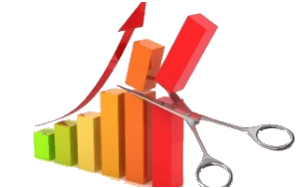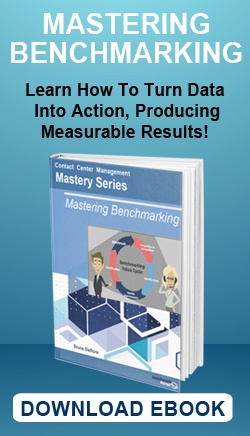
(Updated February 2, 2021)
By Bruce Belfiore
We have all seen photographs of sinkholes that have swallowed buildings whole. Weak underpinnings can have tragic consequences; what you don’t see can really hurt you!
In the contact center world, organizational structure is often a weak underpinning that impedes success. It is not necessarily the first thing we see when we assess a center, but it becomes apparent when we review org charts, operations, work flows and reports. We often see issues in the following contexts:
 Growth situations: Centers that experience fast growth are like teenagers who undergo spurts and outgrow their clothes soon after they are acquired. The organizational structure that fit when your center was smaller is not necessarily going to work now that it is bigger. Higher volumes may call for an overhaul of your structure to keep from being overwhelmed. One situation we saw resulted in increasing the staffing and capabilities of the organization’s training structure and quality monitoring group, along with upgrades on the technology side for workforce management.
Growth situations: Centers that experience fast growth are like teenagers who undergo spurts and outgrow their clothes soon after they are acquired. The organizational structure that fit when your center was smaller is not necessarily going to work now that it is bigger. Higher volumes may call for an overhaul of your structure to keep from being overwhelmed. One situation we saw resulted in increasing the staffing and capabilities of the organization’s training structure and quality monitoring group, along with upgrades on the technology side for workforce management.
 Shrinkage situations: The converse occurs where declining business, a move toward outsourcing, or a customer shift toward self service, results in lower call volume in the center. These situations also call for a reevaluation of resources and structure. They can be painful to deal with, in that well-performing people must lose their jobs or be transferred elsewhere in the organization. As unfortunate as this is, it is necessary to attain proper balance and productivity.
Shrinkage situations: The converse occurs where declining business, a move toward outsourcing, or a customer shift toward self service, results in lower call volume in the center. These situations also call for a reevaluation of resources and structure. They can be painful to deal with, in that well-performing people must lose their jobs or be transferred elsewhere in the organization. As unfortunate as this is, it is necessary to attain proper balance and productivity.
Pandemic-impacted Centers / At-home Agent Operations: The rapid emptying of centers caused by the pandemic in early 2020 strained a lot of long-established structures, and the processes that supported those structures. “Reporting structures” have become more important as “supporting structures”, i.e. every level of management, from supervisors on up, needs to re-tool their mindset and their workday to focus on maintaining effective communication and engagement for all employees. Agent teams may need to become smaller, especially if turnover results in more remote new hires coming into the operation. While managing at-home agents is different from managing in-office agents, the difference depends on the characteristics of your program, including size. In any event, you must be able to monitor performance and provide support down to the individual agent level - - and determine if changes are needed as time goes on.
Functional change situations: We see these situations mostly where there has been a shift from the voice channel to alternative channels such as email, chat, social media, mobile, etc. Managers must be able to understand and analyze customer needs and volumes in these alternative channels. Omni-channel centers may require additional talent in the areas of workforce management and contact analytics to keep their operations optimized.

Mergers and Acquisitions: Many organizations these days are the result of numerous mash-ups caused by acquisition activity. These situations offer major opportunities for cost reductions and best practices sharing across diverse operations. Pitfalls may include the clash of different cultures and a lack of understanding of the new, common mission of the combined enterprise. We saw the situation of a European company that struggled to absorb a North American acquisition. Getting the organizational structure straight was a key element in the process of realizing acquisition “synergies”, but in the absence of a clearly communicated organization chart and business objectives, people continued to refer to their prior superiors, which created confusion. We have also noted that private equity investors are oftentimes focused on product and market issues, and fail to discover the value that could be unleashed by restructuring the customer contact functions of the companies they acquire.
Outsource/insource decisions: The formulas we have seen involving third party providers have gotten more creative and tailored over the years. We assisted with one situation in which the third party provider ran the operations inside of the client premises with employees it had hired on behalf of the client. However, proper collaboration on new hire screening, and coordination on training functions, were lacking. We recommended that there be more guidelines on the hiring side, and that ongoing training concerning new products be taken back by the client, which increased the effectiveness of that function. Outsourcing does not mean your customer contact function gets wiped off your org chart. Your involvement with that function remains as vital as ever.
Do you see yourself reflected in any of these situations? If so, we recommend that you take time out for some discernment on what you could be doing better in terms of structure, and then take action to optimize things. Certainly, this can be a difficult undertaking and it is likely that someone in your organization will end up taking offense at your conclusions. These are not reasons to shy away. If you arm yourself with an objective, rigorous approach and a well-communicated plan, you will do your organization a world of good.
To organize yourself for the endeavor, consider the following pointers:
- Understand your corporate mission and your customer contact mission. Clear, concise mission statements are extremely valuable when you need a focal point for your organizational planning. Your company probably has a published mission statement, and you should know it by heart. Your contact center should also have a mission statement, which is totally aligned with, and supportive of, the corporate mission. One manager in the health insurance sector, who knew she had to make substantial cultural, organizational and process changes in her center, put the mission statement up on the contact center wall for everyone to see every day when they walked in. She got buy-in for the statement early on, and then used it to justify some small changes, which quickly bore fruit and made things better for the center and its people. This built credibility, so that when she needed to make more substantial changes in organizational structure, she was able to point to the same mission statement and explain how the new changes supported the cause.

- Customer Experience Process Mapping. While the mission statement tells you what you should do, processes are all about how you do it. Understand the customer experience from start to finish. Are you a single channel operation, or do you contend with multiple channels? How can you provide customers with a seamless, quality experience? What does that mean in terms of coordination and control among the channels? Many companies today have separate fiefdoms for customer contact operations, and shoot themselves in the foot in terms of providing quality service and building customer loyalty. Perhaps your company should consider bringing social media or website administration under the customer contact umbrella in a way never considered before. Let the customer guide you toward understanding how you should organize and execute.
- Management Reporting Capabilities. Do not let this tail wag the dog, but be aware of it as you go through the process. People who fill key roles must have the information to do their jobs optimally. Depending on their roles, they need to have information on volumes, workforce management, quality, agent performance, complaints, etc. The best structure in the world will not work if those responsible for it are blinded by lack of data as they try to make decisions.
- Benchmark to Determine What is Already Working Well. If you have a multi-site operation, then benchmark them all and see how they look when ranked against each other and against your industry sector. Benchmarking is often neglected by those seeking to re-engineer their organizational structure – to their detriment. This results-oriented analysis is different from the process-oriented analyses indicated above, and is a vital cross-check exercise. After all, measurable results are your goals, at the end of the day. Keep an open, analytical mind as you go through this key part of the process. Look for the reasons your centers may be performing well or poorly. Incorporate those insights into your findings.
- Plug and Play. With the information gleaned from your analyses, draft an org chart and job descriptions that you believe will optimize your operation. Look at your plan critically and try out a couple of different scenarios. Don’t get lost in analysis paralysis. Rather, force yourself through some alternate organizational set-ups until you feel confident with the one you finally choose.
The results of these exercises can be dramatic when properly implemented. Consolidations in areas like recruitment / hiring, training, workforce management and quality monitoring & coaching can save large amounts of money and result in improved performance, as best practices are adopted across all operations. Bringing everyone up to the standards of the highest bar is very satisfying managerially – and extremely beneficial to the company’s bottom line.
Some final words of advice:
- Know how to build the business case for your plan. Get help from your finance department, if needed, to construct an air-tight proposal.
- Be direct, but also diplomatic where possible. You don’t want good organizational ideas to be torpedoed because you communicated them poorly. On the other hand, do not expect everyone to be happy with the process or its conclusions.
- Optimize and maximize use of technology. Technology is often underused in contact centers. See where you can make it your ally. Understand where it needs to be upgraded and create a multi-year plan for implementation, including appropriate ROI analyses.
- If you are in a regulated or unionized environment, be sure your proposed organizational structure conforms to the compliance and contractual obligations of your company.
- Get third party help when you need it. Experts who have seen dozens of centers and organizational structures can help you solidify your own ideas and assist in selling those ideas to your bosses and colleagues.
 Build radial contacts with the rest of your enterprise by reaching across functional silos. Make friends in other departments and understand how they are organized and how they interact with you. You are part of the puzzle. Make sure you fit with the rest.
Build radial contacts with the rest of your enterprise by reaching across functional silos. Make friends in other departments and understand how they are organized and how they interact with you. You are part of the puzzle. Make sure you fit with the rest.
In sum, make sure you have the right bus to move your company forward - - and the right seating chart for the functions you need handled. Put the right people in the seats, train and motivate them appropriately, and enjoy the ride!
Bruce Belfiore
Senior Research Executive and CEO, BenchmarkPortal


